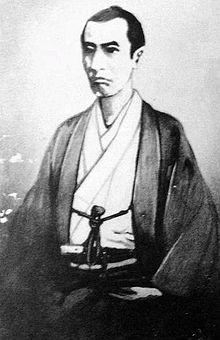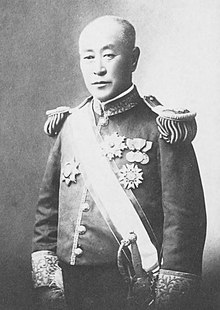 |
| Ito Hirobumi |
In Japan, the first Prime Minister was a man who was born as a low class samurai, and the man is Ito Hirobumi. I presented about him in the class before, but I’m still interested in him. The reason why I think he is interesting is because he lived from Edo period to Meiji period. The lifestyle had changed a lot comparing both eras, but he adapted to it, and also he became one of the people who changed Japan at that time. Therefore I’d love to focus on what he did in his life.
Ito Hirobumi was born in 1841 and named Risuke at first. His family was very poor, and his father was a common foot soldier, so his father was adopted to help their family budget. Since they were adopted by Mr. Ito, who was a member of Choshu domain, the family changed their last name from Hayashi to Ito. At the same time, Risuke also changed his name to Hirobumi.
When he was 16 years old, after the arrival of Perry, who tried to push Japan open the country, Hirobumi began to work as a member of Uraga security because Japan’s feudal government ordered Choshu domain to do so, and his boss was Kurihara Ryozo. He introduced Yoshida Shoin’s cram school to Hirobumi, and he worked for the principle of advocating reverence for the Emperor and the expulsion of foreigners with Katsura Kogoro and Takasugi Shinsaku. Hirobumi was influenced by Shoin a lot, but after his trip to England in 1863, he changed his thought to be in favour of opening the country and overthrowing the government.
Ito Hirobumi was thought to be the great person in Japanese history and you may think in the same way. However, he is also known as an emboldened young man joined to the movement of overthrowing a government. One of the most well-known cases he was involved in was attacking with fire the England legation being built in Shinagawa in 1863. In those days, he was still a teenager of low birth. In addition to this, Mr. Ito is said to have assassinated a waka poet, Kato Kojiro, and the fourth son of a Japanese classical scholar, Hanawa Hokiichi.
As seen above, it seems that Ito Hirobumi would be called a terrorist if he was alive now because his movement was too revolutionary, but he certainly did the very important job for Japan. And one of the biggest jobs is making Meiji Constitution. Ito left Japan in March 14, 1882 to search the constitutions in foreign countries. Additionally, he searched about imperial courts, parliaments, the Cabinets, laws, and local government systems. His studied them in Germany, Austria, Britain, and Belgium, and his visit to Europe lasted for a year and 2 months.
His actions should be seen as dangerous and strange. He was assassinated in Korea because he was the leader of Japan which had occupied and invaded Korea. These days, I heard about the news that a memorial hall was being built for the man who killed Ito, An Jung-geun. In Korea, he is thought to be a hero, but in Japan, he was just a killer. So Japanese governors said that building the memorial hall made them angry because An Jung-geun was a criminal. Responding to these comments, Korean governor got angry. However, for me, neither side should care about such actions or comments. That’s because the hero of a battle between two groups must be a criminal or an enemy for the other group, a loser. The most important thing here is how a movement a person did has influenced and changed one country. Thinking of that helps people not to be angry and to look back on a part of their history.
References
(2010). そのとき伊藤博文は、どうしたか. Retrieved January 14, 2014, from J-Net21: http://j-net21.smrj.go.jp/watch/sanpo/entry/20100712.html
(2010). 伊藤博文. Retrieved January 14, 2014, from 日本歴史巡り: http://www.jphistoryrd.com/mei/ito.html
(2013). 日韓、今度は安重根と伊藤博文で波紋?. Retrieved January 14, 2014, from HUFF POST WORLD -国際-: http://www.huffingtonpost.jp/the-new-classic/post_6205_b_4306017.html
立憲政治を確立した初代首相 伊藤博文. Retrieved January 14, 2014, from 小・中学生のための学習教材の部屋 知識の泉 from: http://www7a.biglobe.ne.jp/~gakusyuu/rekisizinbutu/itouhirobumi.htm



